#big filling meal with a drink and nutritious food and a fruit
Explore tagged Tumblr posts
Text
💜Smart eating - a cheat sheet💜
Wanting to diet, to loose fat and maintain your weight?
~I know many people wanting to change their diet but see them not knowing what alternatives they can switch to~
This often leads to starving, subconscious over-eating or consuming more calories than they are actually aware of.



Getting out of the restrictive and overeating cycle can be difficult, but let me show you what alternatives you have, so you’ll heal your health and mind by eating healthy, nutritious and filling foods.
(I will be sharing my personal experiences and share my opinion on eating certain foods)
1. Gut Friendly And Healing Food
~Kefir, Yoghurt
~Kimchi, Kombucha
~Pickles (fermented food in general)
~Sauerkraut
I include at least one of these into my diet daily.
Drinking Kefir first thing in the morning or having it as my dinner (when wanting to loose weight) is truly magic. I can recommend this highly.
Have one of these as a side dish, include it into your meal or make it a snack.
All these foods help you heal your gut health, clear your skin, balance your hormones and improve your mental/physical health.
-eating probiotic food can help you drop the weight-



2. Alternatives To Include In Meals
(Im very picky when it comes to food so I don’t have the widest range)
Don’t cut out carbs, they are not bad. Just limit them and know their calories.
~Buckwheat
~Potato’s/ Sweet Potato’s
~whole bread (carrot, potato, sunflower seed, oats)
~Eggs
~chicken
~Oats, Chia Seeds, Flaxseeds
~Salmon
~Quinoa
~Cabbage, Peas, Lentils, Tofu, Beets, Turnips, Beans,
From all of these foods mentioned above, my favorites are: Buckwheat (a slavic beauty secret), potato’s and Oats/Chia Seeds. They dominate my diet and helped me loose fat and become toned. (As well as Kefir and Yoghurt)
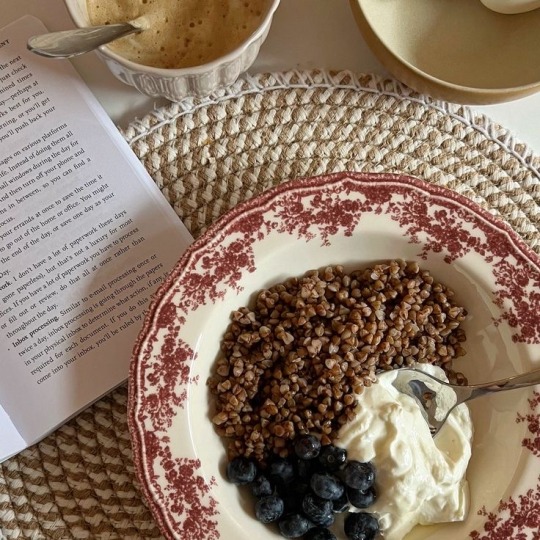

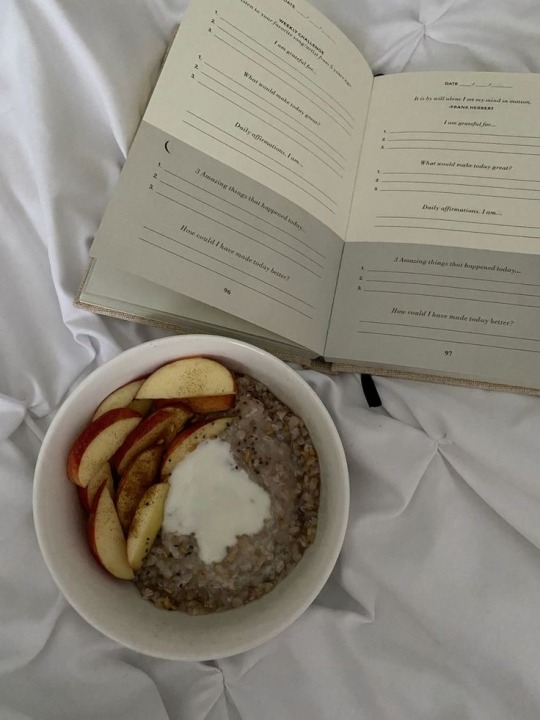
3. The Extras
I don’t add sugar at all and replace it as best as I can.
~honey
~agave syrup
~date syrup
Also, when I want to stop eating sweets, I eat healthier options such as:
~dried fruits (dates, raisins, apricots, plums)
~rice cakes
~regular fruits (blueberries, strawberries, you name them)
!This all takes time. Especially, when you’re freshly starting or trying to break out of unhealthy habits such as being lazy, starving yourself, restricting yourself or binging.
It takes time but you WILL see changes and become a better version of yourself than you have been yesterday.
Sometimes it takes months but just doing something to improve your overall health is a big step already.
Don’t quit and know you can reach your goals💗
#im a star#wonyoungism#clean girl#healthy habits#self love#positive mindset#it girl#becoming that girl#that girl#pilates princess#pink pilates princess#pilates aesthetic#aesthetic#matcha girl#green tea#diet#weight loss diet#weight goals#weight management#weight loss#how to be that girl#girlblog#girls girls girls#healthcare#fitness#girlhood#wonyoung#healthy diet#improving#best version of yourself
50 notes
·
View notes
Text
How to Craft a Balanced & Nutritious Diet Plan 🥦🍎
🌟 Title: "Fueling Your Body Right: Creating a Balanced Diet Plan"
Hey Twitter fam! Let's talk about something super important – creating a balanced and nutritious diet plan. 🥗💪 We all want to stay healthy and energized, right? Here's how to do it without any fuss. 👇
1/ First things first, what's a balanced diet? 🤔 It's all about eating a variety of foods that give your body the right mix of nutrients. That means a combo of:
Fruits 🍓🍌 Veggies 🥦🥕 Protein (like chicken, beans) 🍗🍲 Whole grains (brown rice, oats) 🍚🌾 Healthy fats (avocado, nuts) 🥑🥜
2/ Fill your plate with colors! 🌈🍽️ Each color usually represents different nutrients. Like orange veggies (carrots, sweet potatoes) give you Vitamin A for sharp eyes. Leafy greens provide iron for energy. Mix it up for a nutrient-packed meal! 🥬🥕
3/ Portion control matters! ⚖️ Even if it's healthy, too much of a good thing isn't great. Use your hand as a guide: protein (palm), grains (fist), fats (thumb), veggies (lots!). Balance is key. 🍽️👌
4/ Stay hydrated! 💧 Water is essential for digestion and overall health. Plus, it's calorie-free! Drink up, aim for around 8 glasses a day. 🚰😃
5/ Say no to crash diets! 🙅♀️ Extreme diets aren't sustainable. Instead, focus on long-term habits. Small, gradual changes lead to big results. 📈
6/ Plan your meals ahead! 📅 Planning helps you make healthier choices and avoid grabbing unhealthy snacks on the go. 🥪🥗
7/ Treat yourself – in moderation! 🍫🍰 It's okay to enjoy your favorite treats once in a while. Remember, balance is about overall choices, not perfection.
8/ Listen to your body! 🧘♂️ Pay attention to hunger and fullness cues. Eat when hungry, stop when satisfied. Your body knows best.
9/ Get expert advice! 📚 If you're unsure, a registered dietitian can help you create a personalized plan that suits your needs and goals.
10/ Remember, it's a journey! 🌟 Creating a balanced and nutritious diet takes time. Be patient with yourself and celebrate every small win. You've got this! 💪🎉
So, there you have it! A guide to crafting your very own balanced and nutritious diet plan. Your body will thank you for fueling it right. Have questions? Drop them below! 👇🤗
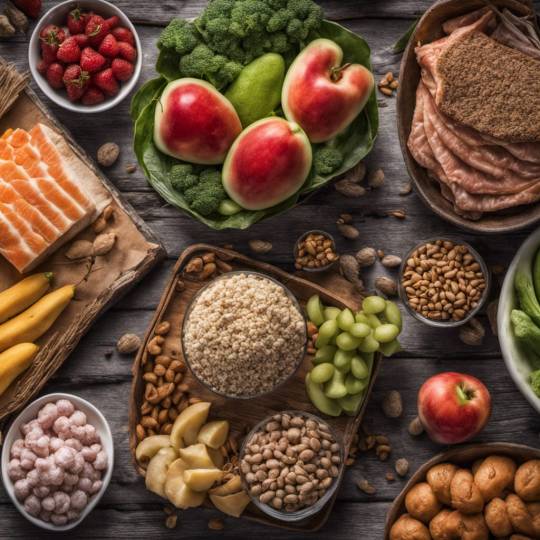
Visit our new blog and keep up to date with all the latest health and wellness tips, guides and product reviews.
#health and wellness#wellbeing#health tips#nutrition#healthy lifestyle#longevity#prevention#physical health
2 notes
·
View notes
Text
Baby Weight Gain Foods: What Every Parent Should Know
A healthy weight is a sign of your baby's overall development, but for many parents, ensuring their child gains enough weight can be a major concern. Fortunately, the right baby weight gain foods choices can make a big difference. From the moment your baby starts solids to toddlerhood, certain foods can help support steady, healthy growth.

Food for 6 Month Baby to Gain Weight
Introducing solids at six months is a significant milestone, and choosing the right foods is key. When focusing on food for 6 month baby to gain weight, you want calorie-rich options that are easy to digest and gentle on a baby’s developing stomach.
Here are some ideal options:
Mashed Banana: A high-energy fruit that’s sweet, soft, and rich in potassium.
Avocado Puree: Full of healthy fats essential for brain growth and weight gain.
Ragi (Finger Millet) Porridge: Packed with calcium, iron, and complex carbs.
Sweet Potato Mash: Provides fiber, vitamin A, and natural sweetness.
Rice Cereal with Ghee: A calorie-dense combination when fortified with healthy fat.
At this stage, you’re introducing food gradually, so portion sizes should be small and meals spread throughout the day.
Baby Weight Gain Food Chart
To make feeding easier, a baby weight gain foods chart can help you plan nutritious meals throughout the day. This also ensures your child gets enough calories from a variety of food groups.
Here’s a simple example for a baby over 6 months:
Morning: Breast milk/formula + mashed fruit Mid-morning snack: Ragi porridge or suji kheer Lunch: Moong dal khichdi with ghee Evening: Avocado or mashed sweet potato Dinner: Oats porridge or rice with mashed vegetables Bedtime: Breast milk/formula
Adjust textures and quantities based on your baby’s developmental stage and appetite.
1 Year Baby Weight Gain Food
Once your baby turns one, you can start offering more variety, including family foods with minor modifications. 1 year baby weight gain foods should be high in calories and nutrients while promoting good eating habits.
Some great foods to include:
Full-Fat Milk and Curd: Rich in calcium and good fat.
Boiled Eggs: A complete protein with healthy fats (introduce slowly if not done before).
Paneer (Cottage Cheese): A protein-rich, versatile dairy option.
Ghee in Meals: Just a spoonful can boost calorie content significantly.
Fruit Smoothies: Blend banana, mango, milk, and nut powder for a nutrient-packed drink.
This age is also ideal for experimenting with finger foods to promote independence during meals.
Food for 2 Year Old Baby to Gain Weight
By age two, children become pickier as they explore their food preferences. Focus on offering calorie-rich foods that also taste great to a toddler. Food for 2 year old baby to gain weight should be nutritious but also appealing.
Try these ideas:
Stuffed Parathas (Potato, Cheese, or Paneer): Easy to eat and full of energy.
Dry Fruit Powder in Milk or Food: A blend of almonds, cashews, and pistachios adds healthy fat and protein.
Peanut or Almond Butter: Spread on toast or roti for an easy high-calorie snack.
Vegetable Dosa or Chilla with Cheese: Tasty and packed with protein.
Homemade Laddoos with Ghee and Dates: A fun and sweet option packed with nutrients.
Make mealtimes interactive—use colorful plates, offer choices, and create a no-pressure environment.
Important Tips for Supporting Healthy Weight Gain
Don't Rely on Junk Food: It may add weight, but it lacks nutrition.
Include Healthy Fats: Use ghee, butter, or avocado in meals when appropriate.
Offer Frequent Meals: 3 main meals and 2–3 snacks work well for most children.
Stay Hydrated: Offer water between meals but avoid filling them up with liquids before food.
Make Eating Fun: Sing songs, use child-sized utensils, and eat with your baby.
Always monitor weight gain through regular pediatric checkups and growth chart tracking.
Frequently Asked Questions
1. How often should I feed my baby to promote weight gain? Babies need frequent meals—every 2–3 hours for infants starting solids and toddlers. Don’t skip meals or snacks.
2. What can I add to food to increase calories safely? You can use ghee, butter, coconut milk, nut powders, or full-fat dairy depending on age.
3. Is it normal for a baby to gain weight slowly? Some babies are naturally lean. What matters is that they stay on their growth curve. Always discuss concerns with your pediatrician.
4. Are commercial weight gain powders safe? Most are unnecessary unless prescribed. Whole foods are safer and more beneficial.
5. My toddler refuses to eat. What should I do? Stay patient, avoid pressure, and keep offering a variety of healthy options. Appetite can vary during growth phases.
Final Thoughts
Helping your child grow in a healthy way doesn’t require fancy diets or supplements. The right baby weight gain foods choices, when introduced at the right time, can make a world of difference. Whether you’re feeding a 6-month-old or a 2-year-old, the goal is to nourish—not just fill—them. Trust your instincts, stay consistent, and always keep mealtimes positive.
0 notes
Text
Soft Foods After Dental Treatment: A Complete Guide to Healing Smoothly
Undergoing dental treatment can sometimes leave your mouth feeling sore, tender, or sensitive. Whether you had a tooth extraction, dental implant, root canal, or periodontal surgery, one of the key steps to a smooth and quick recovery is choosing the right diet. Eating soft foods after dental treatment not only protects the treated area but also provides essential nutrients that aid healing.
In this blog, we’ll explore why soft foods are important after dental procedures, the best options to include in your diet, and tips to make your recovery comfortable.
Why Choose Soft Foods After Dental Treatment?
After dental procedures, your gums, teeth, and jaw are often more vulnerable. Chewing hard or crunchy foods can cause irritation, pain, or even damage to the surgical site. Soft foods minimize chewing effort, reduce pressure on the affected area, and help prevent complications like bleeding or infection.
Eating soft foods after dental treatment ensures you still get necessary nutrients like proteins, vitamins, and minerals without risking your oral health during the critical healing period.
Best Soft Foods to Eat After Dental Treatment
Here’s a list of soft foods that are ideal for post-dental care:
1. Mashed Potatoes
Mashed potatoes are soft, filling, and easy to flavor. They require minimal chewing and are gentle on sensitive areas.
2. Yogurt
Rich in calcium and probiotics, yogurt helps promote healing. Choose smooth, plain yogurt without added nuts or fruit chunks.
3. Smoothies
Blended smoothies are excellent for nutrition. Mix fruits, vegetables, and protein powders for a complete meal. Avoid using straws to prevent dislodging blood clots after surgery.
4. Soups and Broths
Warm (not hot) vegetable or chicken soups are easy to swallow and provide hydration. Pureed soups are the best option.
5. Scrambled Eggs
High in protein and very soft, scrambled eggs are perfect for recovery diets. They are easy to prepare and digest.
6. Oatmeal or Porridge
Soft, warm oatmeal is a comforting option packed with fiber and energy. Add mashed bananas or honey for extra flavor without irritating your mouth.
7. Cottage Cheese
Low-fat cottage cheese is creamy and rich in protein, making it an ideal soft food.
8. Pudding and Custard
If you crave something sweet, pudding and custard are soft, tasty options that don't strain your mouth.
9. Applesauce
Instead of raw apples, which are too hard, opt for applesauce to get the fruit’s nutrients without the chew.
Foods to Avoid After Dental Treatment
To ensure a smooth recovery, avoid foods that are:
Crunchy (chips, crackers, nuts)
Hard (raw vegetables, hard candies)
Sticky (chewing gum, caramel)
Spicy (hot sauces, heavily seasoned dishes)
Extremely hot (which can irritate your gums)
Avoiding these foods will protect the healing site and prevent unnecessary discomfort.
Tips for Eating Soft Foods After Dental Treatment
Eat lukewarm foods to avoid temperature sensitivity.
Chew slowly and gently using the unaffected side of your mouth.
Stay hydrated but avoid drinking through a straw.
Maintain oral hygiene by rinsing your mouth with a mild saltwater solution after eating.
Listening to your dentist’s advice about your diet can make a big difference in how quickly and comfortably you recover.
Final Thoughts
Choosing soft foods after dental treatment is essential for minimizing pain, protecting the treated area, and speeding up recovery. Soft, nutritious meals help maintain your energy and provide your body with the necessary building blocks to heal.
If you’ve recently undergone dental treatment and are unsure about what to eat, remember to stick to foods that are gentle on your mouth and rich in nutrients. Your recovery journey will be smoother, and you'll return to normal eating much faster.
0 notes
Text
The importance of eating three meals a day!
When I started my fitness journey, I wasn’t a very big breakfast person. I would usually just go to school with a coffee, or an energy drink and I would wait until around noon to eat my first meal. In doing this, I would notice that I would be so hungry by the time that I was eating lunch that usually I would snack on a bunch of things beforehand just to tide me over, but none of it ever kept me satisfied. This is why it is so important to eat three meals a day and not skip just because you “don't have the time” or you want to “eat more later and not waste it on breakfast.” Another problem with not eating a satiating and filling breakfast was that at the end of the day, I was not reaching my protein goal because I was snacking up until lunch.
There are so many benefits to eating three nutritious, packed meals each day. A few of these include increasing your energy levels to last you through the day, satiating your appetite so that you are not hungry again 30 minutes after you eat, and reducing the risk of generating nutritional deficiencies. I know a lot of people my age skip breakfast because they usually don’t have the time before class, but I have learned that breakfast can be so easy and is such an important factor in overall daily health. My goal each morning is to shoot for a filling breakfast that is packed with protein, so it fills me up until lunchtime. Also, as a student, breakfast is essential because it provides your brain with the nutrients it needs to start functioning so that you can do your absolute best in school.
If you are someone who doesn’t have a lot of time in the mornings either before school or work, I suggest meal prepping because you can find quick and easy recipes that just need to be microwaved or even just pulled out of the fridge and eaten on the go! Another suggestion is my current breakfast obsession which is a yogurt bowl with granola and berries! I’ve mentioned before about my yogurt breakfast, but for anyone who didn’t see it, I get the Oikos Triple Zero yogurt packs, add Nature Valley Protein granola and whatever berries or fruit I have on hand! It is so delicious and has a pretty fair amount of protein to start the day! Another option for if you are in a rush in the mornings and usually find yourself just going through the drive-through before work or school is to find more protein packed and filling breakfast foods from your restaurant of choice! In a separate post, I will give some options I have found and love for healthier and more protein filled meals/snacks from typical fast-food places, so look out for that!
0 notes
Text
5 Easy Diet Changes to Boost Your Energy and Wellness
In today’s fast-paced world, maintaining high energy levels and overall wellness is more important than ever. The food we consume plays a crucial role in how we feel and function each day. If you’re feeling sluggish or struggling with your energy levels, it might be time to reassess your diet. The good news is, with a few simple adjustments, you can boost your energy and improve your overall health.
As a Dietitian in Chandigarh, I’ve helped numerous clients make small, sustainable diet changes that have led to significant improvements in their energy, wellness, and even weight management. Whether you’re looking to boost your energy, achieve a healthier lifestyle, or kickstart a weight loss plan, these five easy diet changes can help you feel more vibrant and focused.
1. Start Your Day with a Nutritious Breakfast
Skipping breakfast can leave you feeling drained and sluggish. A healthy breakfast kick-starts your metabolism and provides your body with the fuel it needs to maintain energy throughout the morning. Focus on a balanced breakfast that includes a combination of protein, fiber, and healthy fats.
Try a whole-grain toast with avocado and a boiled egg or a smoothie with fruits, spinach, and protein powder. As a Dietitian Near Me, I always recommend including a source of protein in your breakfast, as it helps stabilize blood sugar levels, keeping your energy levels steady.
2. Incorporate More Whole Foods into Your Diet
Processed foods may be quick and convenient, but they can drain your energy levels in the long run. Instead, focus on incorporating more whole foods into your diet, such as fruits, vegetables, lean proteins, and whole grains. These nutrient-dense foods provide vitamins and minerals that fuel your body naturally.
Switching from refined grains to whole grains (e.g., brown rice, quinoa, and oats) is a simple yet effective change that can help boost your energy. Whole foods provide sustained energy throughout the day, helping you stay alert and focused. It’s an essential component of any weight loss plan, as whole foods are more filling and tend to be lower in empty calories.
3. Stay Hydrated
Dehydration is often overlooked as a cause of fatigue and low energy levels. Even mild dehydration can make you feel sluggish, affect your mood, and impair your ability to focus. Drinking enough water throughout the day is crucial for maintaining optimal energy levels.
Aim for at least 8 glasses of water daily, but you may need more if you’re active. You can also stay hydrated by consuming water-rich foods like cucumbers, watermelon, and oranges. As a Dietitian in Chandigarh, I often emphasize the importance of hydration for overall wellness and energy.
4. Eat Small, Balanced Meals Throughout the Day
Eating large, heavy meals can leave you feeling sluggish and tired. Instead of eating three big meals, try eating smaller, balanced meals throughout the day to maintain consistent energy levels. This can help prevent blood sugar crashes, which are often responsible for fatigue.
Each meal should include a balance of macronutrients—proteins, healthy fats, and complex carbohydrates. This will keep your blood sugar levels stable and provide a steady stream of energy throughout the day. Include healthy snacks like nuts, seeds, or yogurt between meals to prevent energy dips.
5. Limit Sugar and Refined Carbs
While sugary snacks and refined carbs may provide a quick burst of energy, they can lead to a crash soon after. This rollercoaster of energy spikes and drops can leave you feeling tired, irritable, and unproductive. Reducing your intake of sugar and refined carbohydrates can help maintain consistent energy levels throughout the day.
Instead of reaching for a sugary snack, opt for fruits, nuts, or a piece of dark chocolate when you need a quick pick-me-up. Cutting down on processed sugars and refined carbs is also a key component of any weight loss plan, as it can help you manage your calorie intake more effectively.
Conclusion
Making small, sustainable changes to your diet can have a big impact on your energy levels and overall wellness. By starting your day with a healthy breakfast, incorporating whole foods, staying hydrated, eating smaller balanced meals, and limiting refined sugars, you can boost your energy and feel better throughout the day.
If you're looking for personalized advice on creating a diet that works for you, I, as a Dietitian in Chandigarh, can help. Whether you're trying to manage your weight, boost your energy, or improve your overall health, I offer tailored weight loss plans and nutritional guidance to help you achieve your goals.
Ready to make lasting changes to your diet? Reach out today for a consultation, and let’s work together to create a plan that suits your lifestyle and helps you feel your best.
0 notes
Text
10 Tips to Enjoy the Holidays Without the Worry of Weight Gain

The holiday season is a time of joy, laughter, and special meals shared with loved ones. But with so many rich dishes and sweet treats, staying healthy can feel tough. Studies show that adults typically gain 1 to 2 pounds during this period, and those already overweight may add even more. While this may not seem significant, many don’t shed the extra weight later, which causes gradual increases over time.
The good news is that with a few simple steps, you can enjoy the holidays and maintain your health. Let’s look at how to stay balanced and feel great throughout the celebrations.
Why You Gain Weight During Holidays
Between late November and New Year’s, the abundance of high-calorie foods, desserts, and drinks, combined with reduced physical activity, often leads to excess intake. Studies show that the average person consumes about 4,500 calories at a holiday feast, with 229 grams of fat from the meal and snacks. To keep your current size through this time, focus on balance and smart choices without missing out on the fun.
10 Tips to Stay Healthy
Move More.. Regular physical activity helps offset extra calories. Dedicate 30 minutes daily to a walk, a dance session, or a sport. A brisk walk burns 150–200 calories and keeps energy levels steady.
Snack Before Parties Eat a light snack, such as an apple, carrot sticks, or a small handful of nuts, before you attend a party — it can prevent you from feeling overly hungry. This makes it easier to eat smaller portions during the meal.
Bring a Healthy Dish Bring something nutritious, like a veggie platter or a fruit salad. It ensures you’ll have at least one healthier option to enjoy. This also gives you the chance to introduce others to lighter but delicious holiday foods.
Don’t Stand Next to the Buffet Table Do not socialize near the food counters, as it often leads to mindless snacking. Instead, move to another area to focus on conversations or activities. If music is on, join the fun and dance, which can burn up to 200–400 calories per hour.
Start with Lighter Foods Begin with low-calorie options like salads, roasted vegetables, or fresh fruit. These fill you up without adding too many calories and leave less room for heavier dishes.
Watch Your Portion Sizes Use a smaller plate and stick to one serving of your favorite dishes. Holiday spreads are hard to resist, but a buffet can easily add up to 1,000–1,500 calories. Keep portions in check!
Stay Hydrated Drink water before and during meals to help control hunger. Choose water, unsweetened tea, or sparkling water instead of sugary drinks or alcohol, which can add hundreds of extra calories.
Pack Healthy Snacks for Travel Carry snacks like nuts, whole-grain crackers, or dried fruit when you travel. This helps you avoid impulsive, unhealthy choices at airports or gas stations.
Eat Slowly When you eat slowly, it gives your brain time to realize you’re full. Studies show that people who take their time while eating consume fewer calories and feel more satisfied.
Focus on Small Wins One indulgent meal won’t ruin your progress. If you overdo it, pick a healthier option for your next meal. Your habits over the whole year matter more than a few holiday moments.
Fun Ways to Burn Extra Calories
If you indulge in a little extra during a meal, balance it out with some physical activity. Here’s how much movement it takes to burn off some popular holiday treats:
One slice of pecan pie (500 calories): Walk briskly for 90 minutes.
Two glasses of eggnog (400 calories): Jog for 45 minutes.
Mini Sausage Rolls (300 calories): Walk for 40 minutes.
Even small actions, like help with cleanup after a party or a walk in the neighborhood to see holiday lights, can add up and make a difference.
Plan Ahead
Mark Events on Your Calendar: Know when you’ll have parties or big meals, as this can help you plan lighter meals or extra activity around those days.
Start New Traditions: Celebrate with non-food activities like a holiday concert, a walk, or games with family.
Reset After the Holidays: Once the season is over, refocus on your health goals with balanced meals and an active routine.
The holidays are about more than food — they’re about connection, celebration, and a chance to make memories. Enjoy festive meals, but aim for balance. A 30-minute walk burns 150–200 calories, while meals rich in vegetables, lean proteins, and whole grains keep you energized.
Small victories make a big impact over time. Relish a favorite dish without guilt, swap soda for water, and build consistent habits. Studies show habits built during the holidays can shape your year, so stay consistent to build momentum for long-term health.
Celebrate, laugh, and cherish every moment, knowing that each thoughtful choice supports a healthier and happier new year. Practice mindfulness and moderation — you’ll step into January more confident and ready to achieve your goals.
#healthylifestyle#healthy diet#healthy food#holiday#fitness#healthychoices#food#dry fruits#healthyhabits#edible oil#healthy eating#trending#explore#benefits#health#nutrition#nutriintact#views
0 notes
Text
What Diet Should You Follow for Optimal Post-Tooth Extraction Recovery?

After a tooth extraction, following the right diet is crucial for a speedy and easy recovery. Your diet has a big impact on how quickly the extraction site heals, reducing discomfort and preventing complications. If you recently had a tooth removed, this guide will assist you in learning what to eat and avoid for optimal healing.
Why Your Diet Matters After Tooth Extraction
Choosing the right foods after a tooth extraction is crucial. Soft foods that require minimal chewing help prevent irritation to the surgical site. Additionally, avoiding hot, crunchy, and hard foods reduces the possible risk of complications such as dry socket, a quite painful condition in which the blood clot gets dislocated from the extraction site.
Foods to Include in Your Post-Extraction Diet
Here are some food options that promote healing while ensuring comfort:
Smooth Soups and Broths: Warm (not hot) soups and broths are excellent choices as they provide nutrients without needing much chewing. They help keep you hydrated and offer a soothing effect. Blended vegetable soups, chicken broth, and tomato soup are great examples.
Mashed Vegetables: Soft vegetables like potatoes, carrots, or peas can be easily mashed and eaten without much effort. They provide essential vitamins and fiber, helping your body heal.
Yogurt and Smoothies: Yogurt and smoothies are not only easy to consume but also rich in proteins and probiotics, which aid in healing. Ensure your smoothies contain soft fruits like bananas, and avoid using seeds or nuts. You can add protein powder or a bit of honey for extra nutrition.
Scrambled Eggs: Eggs come in a variety of soft forms and are an excellent source of protein. Scrambled eggs are easy to chew and can be cooked with soft cheese or herbs to add flavor.
Oatmeal and Porridge: Oatmeal or porridge is filling and nutritious. Cook them until they are soft, and add some mashed fruit or a small amount of honey for flavor. Avoid adding nuts or anything crunchy.
Foods to Avoid After Tooth Extraction
To ensure proper healing, avoid foods that can irritate the extraction site or cause infection:
Crunchy Foods: Items like chips, nuts, or raw vegetables can disturb the healing process.
Hard Foods: Foods that demand a lot of chewing, such as steak or hard bread, should be avoided.
Spicy Foods: Spices may irritate the gums and increase discomfort.
Hot Foods and Drinks: Heat can dissolve the blood clot, increasing the risk of a dry socket.
Sugary Foods: Excessive sugar can encourage bacterial growth and delay healing.
Tips for a Smooth Recovery
Stay Hydrated: Drink plenty of water, But refrain from using straws—the sucking motion has the potential to loosen the blood clot.
Maintain Oral Hygiene: Keep the mouth clean by rinsing gently with salt water, especially after meals.
Follow Your Dentist’s Advice: A local dentist will provide certain specific guidelines based on the complexity of the extraction and individual needs.
Consulting with a Dentist in Ancaster
For those concerned about their diet following a tooth extraction, consulting a dentist in Ancaster can be beneficial. The team at Golf Links Dental is committed to guiding the best practices for post-extraction care. Adhering to the recommended diet can greatly impact the recovery process. For tailored advice and to ensure proper healing, visiting a dental clinic near me is highly recommended.
Conclusion
An appropriate diet plays an important part in post-extraction care. By following these guidelines, you can recover smoothly and minimize the risk of complications. Be sure to choose soft, nutritious foods and steer clear of anything that might irritate the healing area. If you need more guidance or have questions about your recovery, reach out to your dental care provider. A supportive and knowledgeable team can help ensure a comfortable healing process.
0 notes
Text
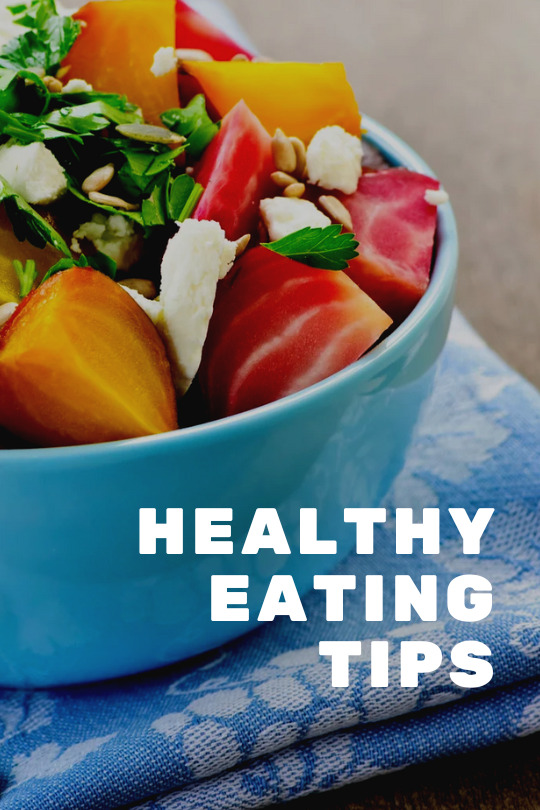
Boost Your Well-being with These Healthy Eating Tips
Eating well is more than just a diet. For a better lifestyle it is crucial that can transform your health and energy levels. Here are some practical and engaging tips to help you embrace a healthier eating habit:
Prioritize Nutrient-Dense Foods: Focus on foods which are rich in vitamins, minerals, and fiber. Incorporate a rainbow of fruits and vegetables into your meals to ensure you get maximum nutrients. Choose whole grains like brown rise and quinoa over refined options for added fiber and health benefits.
Balance Your Meal: Aim for a balanced meal every time. Fill half with vegetables and fruits, one-quarter with lean protein (such as chicken, tofu, or beans), and one-quarter with whole grains. This approach helps regulate your energy levels and provides essential nutrients.
Stay Hydrated: Hydration is key to overall health. Drink plenty of water throughout the day, at least eight glasses of water. You can also include herbal teas or infused water with slices of lemon or orange for variety and added flavor.
Mindful Eating: Pay attention to hunger and fullness cues. Eat slowly and savor each bite. Mindful eating helps prevent overeating and allows you to enjoy your food more fully.
Limit Processed Foods: Avoid eating processed and sugary foods. These often contain hidden sugars and unhealthy fats. Instead, opt for natural snacks like nuts, seeds, and fresh fruit.
Plan Your Meals: Planning your meal prior helps you make healthier choices and saves time. Prepare meals in advance and include a variety of ingredients to keep your diet interesting and nutritious.
Healthy Alternatives: Make simple substitutions to improve your meals. Use Greek yogurt instead of sour cream, or go for whole grains alternative to white bread. These small changes can make a big difference in your overall health.
By incorporating these healthy eating tips into your lifestyle make you have more balanced diets. It boosts your energy levels, and improves your overall well-being. Making thoughtful food choices is a powerful step toward a healthier lifestyle.
#health#healthcare#health and wellness#healthy eating#healthy eating tips#healthy eating habits#balanced diet#balanced nutrition#balanced meal#overall health
0 notes
Text
How to Lose Weight Naturally: Simple and Effective Tips
Losing weight naturally is a goal many of us aspire to, but the abundance of fad diets and quick fixes can be overwhelming. The good news is that understanding how to lose weight naturally doesn’t have to be complicated. By focusing on a few key principles, you can achieve sustainable weight loss without resorting to extreme measures. Here are some effective tips to help you get started.
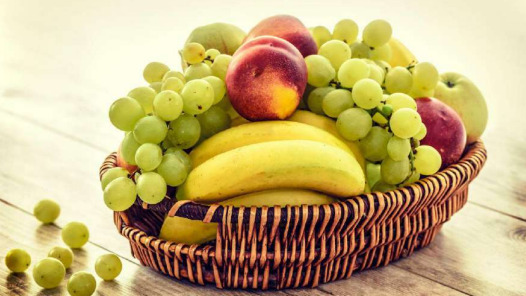
Eat Whole Foods
An abundant diet of whole foods is the cornerstone of a natural weight loss strategy. This entails shunning processed foods in favor of fresh fruits, vegetables, lean proteins, and whole grains. Because whole foods are high in nutrients, they fill you up longer and supply your body with vital vitamins and minerals. Eating more whole foods reduces your tendency to overeat, which facilitates natural weight loss.
Stay Hydrated
In addition to being essential for general health, water can be a potent weight loss ally. Water has several health benefits, including increasing metabolism, eliminating waste from the body, and decreasing appetite. Our body might occasionally confuse thirst for hunger, causing us to eat when we’re only dehydrated. You may better regulate your hunger and cut down on pointless nibbling by drinking enough of water.
Get Moving
Any weight loss strategy must include exercise, and in order to stay motivated, it’s critical to choose things you enjoy. To see results, you don’t need to work out for hours at the gym. Even simple exercises like cycling, jogging, walking, or even dancing can have a big impact. On most days of the week, try to get in at least 30 minutes of moderate activity. Engaging in regular exercise not only increases energy and improves mood, but it also helps burn calories.
Practice Mindful Eating
Changing not only what you eat but also how you eat is part of learning how to lose weight naturally. Eating mindfully involves observing your meal and paying attention to your body’s signals of hunger and fullness. This entails taking your time when eating, enjoying every bite, and avoiding interruptions like TV or phone browsing. You’re less likely to overeat and more likely to appreciate your food if you practice mindfulness.
Get Enough Sleep
Although it’s often disregarded, sleep plays a critical role in weight loss conversations. You may gain weight if you have trouble sleeping and your metabolism is off. To help you with your weight loss efforts, try to get 7–9 hours of good sleep every night. A well-rested body has more energy for physical activity and is better equipped to control hunger hormones.
Manage Stress
Prolonged stress can cause poor eating patterns and comfort food desires, which might result in weight gain. Developing stress management techniques is crucial for natural weight loss. Stress reduction techniques include deep breathing exercises, yoga, meditation, and even spending time in nature. Emotional eating is less likely to occur when stress is adequately managed.
Avoid Sugary Drinks and Junk Food
Junk food and sugar-filled beverages are two main causes of weight gain. They have little nutritious value and a high calorie content, which encourages overeating and increases fat storage. Select healthy substitutes instead, such as fruit, nuts, and seeds as well as herbal teas and water. Eliminating these bad choices will lower your caloric intake and facilitate natural weight loss.
Making long-term lifestyle adjustments rather than chasing after band-aid solutions is the key to learning how to lose weight healthily. You can lose weight in a healthy and natural way by consuming whole foods, drinking plenty of water, exercising frequently, engaging in mindful eating, getting enough sleep, managing stress, and avoiding junk food and sugar-filled beverages. Recall that it’s critical to practice self-compassion and acknowledge that long-term transformation requires time. You can live a longer, happier life if you put in the necessary effort and are consistent.
0 notes
Text
Anti humidity spray for african american hair-Top 3 Products

African American hair will have special needs, so it is crucial to invest in high-quality gadgets and quality products. As an example, kinky hair shrinks, and many individuals with this type of hair will have horror hair stories. It is not easy to maintain afro hair so you should get the right tools and follow the correct methods for maintaining your kinks and curls. Get the best anti-humidity spray for African American hair and wear your crowning glory no matter the season.
Anti humidity spray for african american hair--20 Ways To Care For Your Afro Textured Hair
Water is your best friend

Afro hair needs water, and it is an absolute necessity. Healthy natural afro hair needs water it is recommended that you get it on your head as well as on your body. Drink 8 glasses of water daily and apply water to your hair consistently. One way to get water on your hair is when you detangle it. Because of your natural curls and natural kinks, it is more vulnerable to knots and tangles. If you comb through dry hair, you will get headaches as well as hair breakage. Detangle your hair when it is damp or when you are under the showerheads. This will allow you an easier time to detangle. Have a spray bottle filled with water always on the ready. During the moisturizing process, water is needed. It gives a softer shine to your hair, so use water often. Plan a wash day routine A big plus to having afro hair is you don't have to wash it every so often compared to other types of hair. However, you still need to wash it every week or every couple of weeks to stop the dryness and frizz. Set out a hair wash day routine. During your wash days, use shampoos that boost moisture as well as conditioners that will revitalize your afro curls. Avoid hot water at all costs when washing your hair since it will dry it out and suck out the moisture. Opt for lukewarm water when you cleanse your hair. choose protective styles

As the name suggests these types of styles keep hair breakage to a minimum. Shedding and damage are also stopped. Protective hairstyles for afro include wearing wigs weaves braids or twists. When you opt for braids or twists, make sure that your hairstylist doesn’t put too much pressure on the edges to minimize tension on your scalp. By choosing protective styles, you minimize the chance of over combing your hair and over-styling it. There will also be less damage from heat. It also makes detangling your hair a lot easier. However, you should watch out for dirt buildup when you wear your protective hairstyle. It is crucial to oil your hair daily to keep the follicles in optimum health. Frequently oil your hair Natural hair especially needs oil. Oiling your hair should already be part of your routine. Oils are the key to maintaining and ensuring the health of your hair. These oils can be used for sealing moisture that is already present in your hair. It is ideal to use oils that'll be absorbed into the hair shaft and nourish the rest of the hair. Consider oil products from coconut, olive, and avocado. Oils from these sources are best applied after a leave-in conditioner. It gives tighter textures and adds vital moisture to your hair. Eat for your hair Nutritious meals are necessary for the body's health. What you eat will also affect your hair, and the right meals can contribute to stronger, healthier strands. Choose meals that have balanced, low-fat proteins, dairy, fruits, and vegetables as well as grains. These will add to the health of your hair and promote hair growth. Omega 3 fatty acids are essential for a healthy scalp. Foods rich in omega 3 fatty acids are salmon, walnuts as well as avocados. Increase protein in your diet by eating eggs and foods from poultry sources. This type of diet will give you stronger hair. Increase the hydration in your hair by eating fruits rich in Vitamins A and C. You can get these vitamins from food sources such as leafy vegetables spinach and asparagus. Wear a satin scarf or bonnet It is crucial to go to bed with a satin scarf or bonnet over your head. This little trick keeps your hair from getting tangled and breaking as you sleep. You should also sleep on a pillowcase made of silk and smooth satin. If you sleep with loose hair on a pillowcase made of cotton, you will end up with dry hair, and damaged hair since there will be friction with the cotton material. Pillowcases made of silk or satin are gentler for hair as well as preserve hair's moisture. Give your hair deep conditioning It is vital to deeply condition your hair at least once a week or every couple of weeks. Choose a mineral oil-free product when you are scheduled for hair conditioning. Argan oil and lavender are both good ingredients for your hair. You may also opt for a curling custard. If you have a deep conditioning routine for your hair’s maintenance, you will get improved protein balance and achieve a better look and feel for your hair. Condition your hair regularly to make it healthy, soft and stop the damage. A conditioner especially works after a clarifying shampoo. If you want better protein balance, add some honey olive oil or shea butter with your conditioner. Braid your hair before sleeping Split your hair into a few braids before going to bed. When you braid before bedtime, it locks in the moisture all through the night. Braids help keep your strands held together so they will be sharing the moisture and won't get loose or rub against the pillow. Make it a part of your routine to braid before going to bed Get regular hair trims

A bad habit of a lot of people is allowing their hair to grow out with all the split ends. Part of your natural hair maintenance is to trim your split ends regularly. Split and signal hair damage and if you do not remedy it, the splitting will continue and cause serious damage to your hair. Every two weeks examine your hair for split ends, and either trim them yourself or go to a salon to do the job for you. To see if you have split ends run down your fingers through your hair. This can tell you if there are any breaks along with the hair. Make sure that you trim your split ends a good distance above the splits, or it will just continue splitting. Even if you don't think that your hair doesn't have any split ends do this test: if you move your fingers on your head and it feels rough this signals hair damage. Get regular sleep It is crucial to practice healthy habits for optimum health for the body, including the hair so getting enough sleep is crucial. As your rest, your body will heal cells and tissues, so get enough sleep daily. People who are deprived of sleep experience hair loss since follicles will become more brittle due to physical stress. Six to eight hours of sleep each night is recommended. When you wake up the next morning, you will feel refreshed and fully rested. Your hair will also get rewards and retain its strength and lustrous quality. If you feel you haven't gotten enough sleep during the night, you can have naps during the day. Cover your hair when under the elements In tropical areas weather tend to be harsher so wear a hat or scarf to protect your hair. The elements can cause damage to afro hair, especially when it has to withstand direct contact with wind, heat, and rain. These weather elements suck out moisture induce frizz and make the hair unmanageable. Always have a protective accessory with you, such as a head wrap or umbrella. Bandannas also work great and are particularly colorful and stylish.
Anti humidity spray for african american hair—Top 3 Products
OUR TOP PICK 72-Hour Frizz Resistance Suave Professionals Hairspray, Luxe Styling Infusion Smooth Anti-Humidity This anti-humidity spray for African American hair gives a major hold and is strong enough to combat even the muggiest hottest days of summer. A bonus in this anti-humidity spray for African American hair is it produces touchable softness and supreme brushability. It is a luxurious product for your thick hair and makes it frizz-free. https://youtu.be/EXSsz6IRhto This product gives firm control to enhance frizz resistance even in 95% humidity levels. It will give your hair a brushable finish. This anti-humidity spray for African American hair is better than conditioners. This product has luxe style infusion anti-humidity properties inspired by the best salon-level products. The anti-humidity spray for African American hair gives you a look that is as good as your stylist does it? It gives an ultra-fine mist and offers frizz resistance even in the most severe humid conditions. It holds as well as the most expensive products. Use this anti-humidity spray for African American hair to make sleek ponytails or any style of hair you want. Use a flat brush and blow-dry your hair in the direction of your ponytail. Brush product into your hair and secure your hair with elastic. Spray more for extra hold. Suave back its anti-humidity spray for African American hair and give you a replacement or refund if you're not fully satisfied. Check Price on Amazon Runners Up Kerastase Laque Noire Anti Humidity Super Shield Fixing Hairspray This anti-humidity spray for African American hair gives the highest hold hair spray compared to any luxe hair brand. Expectations are fairly high for this product, and thus far, it has lived up to the hype. https://www.youtube.com/watch?v=1KKv0elSayo&feature=emb_imp_woyt It comes with a micro diffusion spray that gives even dispersion of the product on the hair. This anti-humidity spray for African American hair is lightweight and is a water-free formula. It can withstand damp and humid weather. You will get the perfect coiff under any condition. This anti-humidity spray for African American hair is a stronghold hair spray and results in softer shinier hair. You won't get any flaking stickiness or residue. Put this anti-humidity spray for African American hair on your hair and get 48-hour protection. This is also an excellent working spray as you style your hair. Gives brilliant shine and definition to your curls. This anti-humidity spray for African American hair gives the moisture-thirsty strands need. Get a polished flyaway-free finish. To use this anti-humidity spray for African American hair spray on dry hair in a circular motion and get a long-lasting hold. Finally, tame your afro and fight humidity with this anti-humidity spray for African American hair. Check Price on Amazon Oribe Impermeable Anti-Humidity Spray This anti-humidity spray for African American hair knows coarse hair types become skewed and frizzy automatically even on days when it's not humid. Getting a potent anti-humidity spray for African American hair is a must. This anti-humidity spray for African American hair creates a protective shield around each strand to stop frizz and manage moisture for up to 24 hours. Get this anti-humidity spray for African American hair on the sultriest days and the warmest nights. Protect your hairstyles, such as your sleek blowout and perfect curls. This anti-humidity spray for African American hair has been tested in Miami. Get the utmost anti-humidity shield. To use this anti-humidity spray for African American hair, spray on dried hair and set the style to add some texture. You can use this product before styling to get the texture and hold you want. This anti-humidity spray for African American hair has top-quality ingredients and doesn’t contain parabens or sodium chloride. It is safe for color-treated hair. Another plus factor is the UV protection it provides. You also get pro-vitamin b5 which thickens conditions and builds volume for the hair. Panthenol ingredients increase the hair shafts and add volume to the hair. Tocopheryl Acetate and Retinyl Palmitate give you protection from free radicals as well as Vitamin-rich nourishment. Check Price on Amazon
Final Thoughts

Wear your crowning glory in any weather. Your afro hair is especially beautiful, luxurious looking, and amazing. Keep up its appearance with the best anti-humidity spray for African American hair and beat the toughest weather. Investing in quality products ensures the health of your hair which will make you confident and satisfied every time you look in the mirror. Read the full article
0 notes
Text
Baby Weight Gain Foods: Making Mealtime Nutritious and Enjoyable
When your baby is not gaining enough weight or seems smaller compared to others their age, it’s only natural to feel concerned. While every child grows at their own pace, it’s important to ensure their meals are rich in calories and nutrients. Choosing the right baby weight gain foods can make a big difference in your little one’s growth journey.

In this blog, we’ll walk you through the best food choices, organized by age group, and provide easy tips to incorporate these options into your baby’s diet.
Food for 6 Month Baby to Gain Weight
When your baby turns 6 months old, it’s a significant milestone—they’re ready for solids. However, breast milk or formula will still remain their main nutrition source during this time. Complementing it with energy-rich solids is a smart way to start the weight gain journey.
Here are great food for 6 month baby to gain weight:
Avocado: Packed with healthy fats, avocados are soft and creamy. Mash them up and serve alone or mix with banana for extra calories.
Banana: Naturally sweet, bananas are high in energy and easy to mash or blend with other fruits.
Sweet potatoes: A great source of fiber and vitamins, they’re also calorie-rich and ideal for a smooth puree.
Rice cereal: Choose iron-fortified options or make homemade rice cereal with a splash of breast milk or formula.
Moong dal puree: Lentils are rich in protein and provide healthy calories when blended into a smooth soup.
Start slow and introduce one food at a time. Give your baby a few days with each new food so you can monitor any allergies or sensitivities.
Baby Weight Gain Food Chart
Instead of using a printed chart, it helps to plan a consistent meal routine for your baby throughout the day. For instance, you can begin the morning with breast milk or formula followed by a mid-morning solid like ragi porridge. Lunch can include mashed rice and lentils with a bit of ghee. An afternoon snack could be curd with mashed banana, and dinner can consist of rice with soft-cooked vegetables and lentils. Continue breastfeeding or formula-feeding in between meals.
This kind of structured daily plan ensures your baby is getting enough calories from a variety of sources while also establishing healthy eating habits.
Food for 2 Year Old Baby to Gain Weight

At two years old, your toddler is running, climbing, and exploring more than ever. This extra activity burns calories fast, so you’ll need to fuel their growth with nutritious meals. The best food for 2 year old baby to gain weight includes protein, healthy fats, and carbohydrates.
Great options include:
Whole milk: Offer two cups of whole milk daily for calcium and fat.
Nut butters: Peanut or almond butter spread on toast is energy-dense and delicious.
Paneer (cottage cheese): It can be used in sandwiches, curries, or served as cubes.
Stuffed parathas with ghee: These can be filled with mashed potatoes, cheese, or even ground meat.
Eggs: Scrambled or boiled, they are a great source of protein and healthy fats.
Homemade smoothies: Blend banana, milk, dates, and oats for a calorie-rich drink.
Offer three balanced meals a day with two to three snacks in between to keep energy levels high.
1 Year Baby Weight Gain Food
At the 1-year mark, your baby can try a wider variety of family foods. Offering a balanced mix of protein, fats, and carbohydrates ensures steady and healthy weight gain. Choosing the right 1 year baby weight gain foods is key.
Here are some ideas:
Idli with ghee: Soft steamed rice cakes are easy to chew and nutritious when topped with ghee.
Khichdi: A one-pot dish of rice, lentils, vegetables, and ghee is both filling and nourishing.
Mashed potatoes with butter: Simple, yet effective and rich in calories.
Daliya (cracked wheat): Cook it in milk with dates or jaggery for a sweet and healthy treat.
Boiled eggs or egg curry: Offer a soft-boiled egg or small pieces of omelet depending on your child’s chewing ability.
Encourage self-feeding with soft finger foods to improve appetite and independence.
Homemade Baby Weight Gain Food Recipes
Making meals at home allows you to control the ingredients, avoid preservatives, and pack in the nutrients your baby needs. Here are some quick baby weight gain foods recipes you can try:
Banana and Oats Porridge Cook oats in milk until soft. Mash a ripe banana and mix with the cooked oats. Serve warm for a naturally sweet, calorie-rich meal.
Rice and Moong Dal Khichdi Cook rice and moong dal with a pinch of turmeric. Mash the mixture well and add a spoon of ghee before serving.
Ragi Porridge with Dates Cook ragi flour in milk along with chopped dates until thickened. This iron-rich porridge supports healthy weight and brain development.
Avocado Banana Mash Mash half an avocado and half a banana until smooth. This creamy, no-cook snack is rich in healthy fats and perfect for babies new to solids.
Common Mistakes to Avoid When Offering Baby Weight Gain Food
While it’s important to focus on baby weight gain foods, avoid falling into these common traps:
Too much sugar: Sweets might increase calories but offer poor nutrition and may lead to bad habits.
Overfeeding: Babies and toddlers often regulate their hunger naturally. Don’t force-feed.
Neglecting hydration: Constipation can be a side effect of higher-calorie diets. Ensure your baby gets enough fluids.
Skipping meals: Consistency is key. Skipped meals can make it hard to maintain weight gain.
Ignoring physical activity: Let your baby play. Physical activity actually improves appetite and supports muscle development.
Final Thoughts
Feeding your child the right baby weight gain foods is a journey that involves patience, creativity, and consistency. Every baby is unique—some may take time to adjust to solids or show slower weight gain. That’s okay. The key is to offer balanced, homemade meals made with love and rich in nutrition.
Whether your child is six months old or two years old, a thoughtful meal plan filled with fresh fruits, vegetables, whole grains, proteins, and healthy fats will go a long way in helping them grow strong and healthy.
0 notes
Text
Winter Weightloss Diet Plan
Winter Weightloss Diet Plan | Lose Upto 5 kg in Month
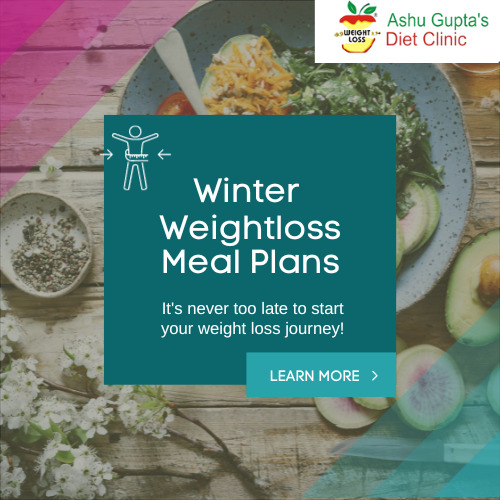
Admin
20-Dec-2023
Winter Weightloss Diet Plan | Best Weightloss Diet Plans by Dt. Ashu Gupta
Yes, following a winter weight loss diet plan for achieving your weight loss goals is quite simple with Dt. Ashu Gupta. Weightloss is very cruicial process of life. It Requires Some Exercise, a Good Diet, and Time. Some believe that as winter makes us so lazy, it's harder to lose weight during this season. In comparison to the summer,
But According to One of the Best Dietitian in Gurgaon (Dt. Ashu Gupta). You Can Achieve Your Weightloss Goals in Any Season, all you need is consistency. You Will Have to Follow Proper Diet Plan According to Winters. With Dt. Ashu Gupta, You Can Create Your Own Customized Winter Weight Loss Diet Plan.
Follow This Winter Weightloss Diet Plan
Hydrate Adequately: Staying hydrated is essential for weight loss and general health, even though the weather is getting colder. To stay warm while consuming enough fluids, choose warm drinks like herbal teas, soups, and broths.
Choose Whole Grains: Replace processed grains with whole grains such as oats, brown rice, and quinoa. Because these grains have higher vitamin and fiber content, they aid in weight loss by increasing your feeling of fullness.
Include Lean Proteins: Give priority to lean protein sources including lentils, fish, poultry, and tofu. In addition to being necessary for maintaining muscular mass, protein can help suppress hunger and aid in weight loss.
Mindful Eating: Pay attention to your body's signals of hunger and fullness and be careful of portion amounts. To avoid overeating, keep your mind off other things and enjoy every piece of food.
Dry Fruits and Nuts: Enjoy a mixture of dates, dried figs, walnuts, and almonds as a snack. These give you vital nutrients and good fats, and they can give you a big energy boost in the cold. Include foods high in healthy fats, such almonds, avocados, and olive oil, into your winter diet. These fats promote general health and aid in hunger. You can acheive your weight with winter weightloss diet plan.
Warm Soups and Stews: Enjoy freshly cooked stews and soups that are loaded with nutritious grains, lean meats, and vegetables. These filling, hearty, and warm meals can be nourishing as well as satisfying.
Limit Sugary Treats: Limit your consumption of sugar-filled snacks and sweets. Alternatively, use naturally sweet fruits or small servings of healthier options to satisfy your desire for sweetness.
Plan Balanced Meals: At every meal, try to find a balance between carbohydrates, proteins, and fats. This balance maintains your blood sugar levels stable and your energy levels high all day.
Create a Routine: Establish a regular sleeping and eating schedule. Maintaining a regular routine can assist with weight loss by regulating your metabolism.
Stay Active : Make time for regular exercise, even if it's only indoor activities or winter sports. Exercise is essential for both general health and weight loss.
Warm Spices: Add warming spices to your food, such as black pepper, garlic, ginger, and cinnamon. These spices can increase metabolism in addition to adding flavor.
Rotis and Millets: Pick whole grain rotis or incorporate jowar and bajra, two types of millets, into your meals. These healthy grains have the potential to prolong feelings of fullness.
Herbal Teas: Choose herbal teas that are warming, such as masala chai, tulsi (holy basil) tea, or ginger tea. These may help improve your health in addition to keeping you warm.
Add Seasonal Fruits and Vegetables: Add winter vegetable and fruits to your meals, such as sweet potatoes, kale, pomegranates, citrus fruits, and Brussels sprouts. These foods offer variety to your diet in addition to being extremely nutrient-dense. This can be very helpful in your winter weightloss diet plan.
Savor winter fruits such as pomegranates, guavas, and oranges. These fruits help strengthen your immune system since they are high in antioxidants and vitamin C. Accept winter vegetables such mustard greens (sarson ka saag), carrots, cauliflower, spinach, and methi (fenugreek). In addition to being fresh in the winter, these veggies are a good source of vitamins and minerals.
Warm Porridge: Warm porridge made from quinoa, ragi (finger millet), or oats is a great way to start the day. For extra taste, garnish it with seasonal fruits and a honey drizzle.
Fermented Foods: Eat more fermented items in your diet, such as pickles, yogurt, and buttermilk. These foods include probiotics that support gut health and can help with digestion.
Turmeric Milk (Haldi Doodh): Before going to bed, think of sipping a nice glass of turmeric milk. Due to its anti-inflammatory qualities, turmeric can be used to treat winter illnesses.
Plan Indoor Workouts: If working out outside is difficult for you, schedule exercises inside. Exercises at home can be done inside with dance and yoga, and there are many of online tools available.
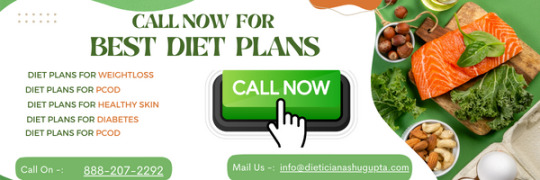
Which Seasonal Fruits and Vegetables to add in Winter Weightloss Diet Plan
Including seasonal fruits and vegetables into your winter Weightloss diet plan will help you achieve your weight loss objectives while also giving you vital tastes and nutrients. You can include the following seasonal fruits and vegetables in your diet during the winter:
Seasonal Fruits and Vegetables for Winter Weightloss Diet Plan:
Oranges: Packed with fiber and vitamin C, oranges offer a cool and healthful snack.
Grapefruit: Rich in antioxidants and low in calories, grapefruit is well-known for its ability to speed up metabolism.
Pomegranates: Rich in antioxidants, pomegranates give your diet a taste and color boost. They also include vitamin C and fiber.
Apples: Packed with fiber and antioxidants, apples are a handy and portable snack. Extra nutrients are added when eaten with the skin on.
Kiwi: This little fruit has a lot of fiber, vitamin K, and C. It tastes good on its own or as a nice garnish for salads.
Guavas: Guavas are high in antioxidants, vitamin C, and dietary fiber. You can eat them raw or blend them into smoothies.Winter Seasonal Vegetables:
Carrots: Rich in fiber and low in calories, carrots are a wonderful source of beta-carotene.
Cauliflower: A low-calorie, adaptable vegetable, cauliflower can be used in dishes in place of components with greater caloric content.
Spinach: A nutrient-dense leafy green that may be used in salads, soups, or sautéed as a side dish, spinach is rich in iron, vitamins, and antioxidants.
Broccoli: A nutrient-dense vegetable that may be roasted, steamed, or added to stir-fries, broccoli is high in fiber and vitamin C.
Beets: Packed with of fiber, vitamins, and minerals, beets are low in calories. Add them to salads or roast them for a tasty side dish.
Brussels sprouts are little cabbages that are rich in vitamin C and fiber. They make a wonderful and nourishing side dish when roasted or sautéed.
Radishes: They give salads a crisp texture and are low in calories. They are an excellent source of vitamin C as well.
Sweet potatoes: Sweet potatoes are a nutrient-dense, satisfying food that's high in fiber, vitamins, and minerals.
How to Control on Cravings to Follow Winter Weightloss Diet Plan
Eating mindfully, making wise food choices, and adopting lifestyle changes are all necessary to curb cravings throughout the winter and prevent weight gain. Tricks of Secret Winter Weight Loss Diet Plan Always keep in mind that treating yourself once in a while is common; the secret is to strike a balance that suits you.
If you struggle to control your appetites or have certain nutritional needs, you might want to seek individualized advice from a certified dietitian (Dt. Ashu Gupta). Dt. Ashu Gupta has experience of more than 15+ Years as Weightloss Dietitian.
A well-rounded and nutrient-rich meal plan can help your weight loss goals while supplying vital vitamins and minerals. You can achieve this by including a range of these seasonal fruits and vegetables in your diet.
For a thorough and long-lasting strategy to weight loss, don't forget to balance your diet with lean proteins, whole grains, and healthy fats. You can contact Dt. Ashu Gupta for customised winter weightloss diet plan.
0 notes
Text
How to lose weight fast in 2 weeks 10 lbs
How to Lose Weight Fast in 2 Weeks 10 lbs— Shedding 10 lbs at Home
Losing weight quickly can be a challenge, but it is possible. If you’re looking at how to lose weight fast in 2 weeks 10 lbs, you’ve come to the right place.
Losing weight fast and effectively is a goal for many people. In this article, we will guide you on with a simple and practical approach.
Whether you prefer to do it at home or with exercise, along with a diet plan.
Click here for complete information
How to lose weight fast in 2 weeks 10 lbs at home
Here are some tips on how to lose weight fast in 2 weeks 10 lbs at home:
First things, remember that losing 10 kg in just two weeks is quite ambitious, but it’s doable with the right approach.
Smart Eating: When it comes to losing weight at home, what you eat is crucial. Opt for healthy and nutritious foods like fruits, vegetables, and lean proteins.
Avoid the sugary stuff and keep an eye on portion sizes. Drinking plenty of water can help curb those cravings and assist in weight loss. Start making smarter food choices to kick off your journey.
Exercise at Home: You don’t need any gym equipment. At home, you can do exercises like jumping jacks, squats, mountain climbers, crunches, or even some yoga. These are the best exercises to lose weight fast at home.
These activities can help rev up your metabolism. The key here is consistency. Try to fit in some exercise daily, and you’ll see those pounds gradually coming off.
Rest and Patience: Don’t forget the power of good sleep. Aim for 7–8 hours each night. A well-rested body burns fat more efficiently. And remember, losing weight quickly is an ambitious goal, so be patient with yourself.
Small steps can lead to big results, and as long as you stay committed to your plan, you’re on the right track.
Drink plenty of water to stay hydrated and limit unnecessary cravings. Water helps in flushing out toxins and aids in weight loss.
Good luck on your weight loss journey!
How to lose weight fast in 2 weeks 10 lbs Diet Plan
Click here for complete information
First note some points about diet plan before sample of how to lose weight fast in 2 weeks 10 lbs plan.
Balanced Diet
Consume a balanced diet that includes a mix of proteins, carbohydrates, and healthy fats.
Avoid processed foods and focus on whole grains, lean proteins, and fruits and vegetables.
Caloric Deficit
You must establish a calorie deficit in order to lose weight. Consume fewer calories than you burn through your daily activities and exercise.
Meal Planning
Plan your meals. It is important to have nutritious snacks easily accessible to prevent them from being tempted to seek out harmful ones.
Avoid Sugary and High-Calorie Foods
Cut down on sugar, junk food, and high-calorie items. Opt for nutritious, filling options instead.
Click here for complete information
0 notes
Text
13 Healthy Foods To Eat For Breakfast
No matter how hectic your mornings are, you can quickly and easily prepare a healthy breakfast with these recipes. Keep yogurt, whole-wheat bread, and frozen fruit on hand to make breakfast quickly. The recipes range from simple peanut butter and banana sandwiches to decadent avocado toast with buttery mozzarella cheese. This article provides a long list of nutritious and delicious breakfast options. Let's get started, then!

Mascarpone & Berries Toast: This easy and healthy breakfast toast is brightened by adding creamy mascarpone, fresh berries, and mint.
Peanut Butter-Banana English Muffin: Historically, the most formidable duo has been peanut butter and banana. A healthy breakfast of champions is the two on top of a toasted English muffin with a dash of ground cinnamon.
Apple & Peanut Butter Toast: Apples and peanut butter on toast get a flavor boost from a dusting of ground cardamom.
Really Green Smoothie: This green, healthy smoothie recipe is packed with kale and avocado. This smooth drink is boosted with fiber and omega-3 fatty acids from chia seeds, which are good for your heart.
Cherry Smoothie: This recipe for a cherry pie smoothie uses oat milk, vanilla extract, and sweet cherries. A touch of brown sugar brings back fond memories even more vividly.
Spinach, Peanut Butter & Banana Smoothie: The classic peanut butter and banana combination is elevated by adding tangy, probiotic-rich kefir. Add some mild-tasting spinach to this peanut butter banana smoothie, and you can increase your daily vegetable intake.
White Bean & Avocado Toast: Creamy and high in fiber, mashed avocado, and white beans are delicious on top of toast. Try it out as a fast meal or snack.
Pecan Butter & Pear Toast: Try this easy toast recipe with three ingredients for a quick meal or snack. The sweetness of the pear complements the nuttiness of the pecan butter.
Ricotta-Berry Crepes: If you want a healthy breakfast option on hand at all times, make a big batch of these simple 3-ingredient crepes and store them in the freezer. Protein-rich ricotta and fiber-rich berries make a store-bought pancake a well-rounded meal.
Coconut Blueberry Smoothie: Add coconut milk and cream to your blueberry smoothie for a tropical twist. This healthy smoothie recipe benefits from adding freshly squeezed orange juice, but bottled orange juice will do in a pinch.
Peanut Butter-Banana Cinnamon Toast: A dash of cinnamon enhances the rich flavor of peanut butter and banana on toast.
Egg Salad, Avocado Toast: This 5-minute healthy breakfast is like a love child between egg salad and avocado toast.
Ricotta & Yogurt Parfait: This healthy breakfast recipe resembles a lemon cheesecake and can be made quickly in the morning. Or, make the filling the night before and store it in a jar; add the fruit, nuts, and seeds in the morning.
Conclusion
Many breakfast staples provide nutrients, stamina, and protein. Start the day with eggs, muesli, and whole-grain cereal.
#healthybreakfast#mascarpone#berriestoast#cinnamon#cherrysmoothie#spinach#peanutbutter#bananasmoothie#avocadotoast#whitebean#pecanbutter#peartoast#ricottaberrycrepes#coconutblueberrysmoothie#ricotta#yogurtparfait
0 notes
Text
gonna have a proper breakfast for the first time in months woo progress
7 notes
·
View notes